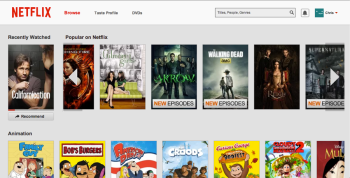Since Facebook was first introduced to the world on Harvard University’s campus, it was quite clear that it would be an important and highly influential company. Throughout his book, The Facebook Effect, David Kirkpatrick worked to outline and explain just how Facebook grew so quickly and why it was able to reach the level it is at today. In his book, which was published in 2010, Kirkpatrick went into significant background detail as he explained Facebook’s history- from Mark Zuckerberg’s Harvard dorm room to Facebook’s world headquarters. Ultimately, David Kirkpatrick’s The Facebook Effect is a great chronology of the development and history of Facebook and gives its readers particular insight into this fascinating subject.
Firstly, Kirkpatrick’s book is quite straightforward and can be read and understood by almost anyone. He utilized a chronological approach in order to explain just how Facebook got to the point at which it is today. He began the book by providing background on Facebook’s founder, Mark Zuckerberg, and some of the other projects he did prior to Facebook. Alongside this, Kirkpatrick introduced important individuals as their contributions to Facebook’s history became relevant. Next, Kirkpatrick explained how Facebook was able to systematically grow and spread from different college campuses, and ultimately other demographics. Ultimately, Kirkpatrick ended The Facebook Effect by discussing possibilities for its future, and ended the book with, “Zuckerberg cares deeply about Facebook’s potential to serve as a bridge between people. He will work to turn it even more into a town square for the global village….Maintaining the enthusiasm of hundreds of millions of people who joined originally to communicate with their friends will remain his ongoing challenge” (Kirkpatrick 333).
Kirkpatrick does not necessarily have a main argument in The Facebook Effect. Instead, he used his work to allow people to understand just how Facebook grew, and why it grew so rapidly. In order to successfully outline and explain Facebook’s history, Kirkpatrick did a significant amount of research. Throughout The Facebook Effect, it is quite obvious that Kirkpatrick did extensive research for the book. Kirkpatrick utilized several important documents and accounts throughout the book in order to piece together key events and developments. These accounts also included direct and in person interviews with key Facebook figures, including Zuckerberg himself. The firsthand accounts and descriptions undoubtedly played an essential role in allowing Kirkpatrick to write an accurate and fair book.
Alongside this, while Kirkpatrick worked to explain Facebook’s history, he also worked to illustrate its effect- hence the book’s title. Throughout The Facebook Effect, Kirkpatrick demonstrated exactly how Facebook was able to have such a great effect on the population with its amazing communication techniques and opportunities. For instance, once Facebook allowed its users to post photos and tag friends in them, Kirkpatrick explained, “Facebook executives were seeing the Facebook Effect in action themselves for the first time. Zuckerberg was beginning to talk about what he would come to label the ‘social graph,’ meaning the web of relationships articulated inside Facebook as the result of users connecting with their friends” (Kirkpatrick 157). Ultimately, Kirkpatrick demonstrated exactly how Facebook was able to have such a great impact of social networking and consequently connecting people so well.
While Kirkpatrick’s book is extremely well researched and laid out, there are certain aspects of it that are questionable. Due to the fact that Kirkpatrick was able to interview many key people at Facebook for this book, he obviously had a lot of contact with them- especially Zuckerberg. While this is the case, Kirkpatrick definitely takes a more so protective tone when he wrote about some of Zuckerberg’s questionable actions and attitudes. In many other pieces about Facebook, including the recent film, The Social Network, Zuckerberg is typically shown in a much less flattering light. However, while Kirkpatrick did admit to and discussed these negative qualities Zuckerberg has become known for, he tended to then defend or protect him against them. While Kirkpatrick certainly used a tone that he believed was most relevant and necessary, his approach to Zuckerberg is very different than other works, which is quite interesting and may cause some questions.
Finally, while Kirkpatrick’s book was really interesting and well written, it is slightly outdated now. The Facebook Effect was published in 2010, and quite a bit has happened at Facebook since then. Due to this, it would be really interesting if Kirkpatrick updated this book and also made further predictions for the future of Facebook now that it is a public company and has grown even more since 2010.
In the end, David Kirkpatrick’s The Facebook Effect is an extremely interesting and engaging book. Kirkpatrick was able to outline and explain the history of Facebook very well. Alongside this, Kirkpatrick was able to successfully explain just how Facebook was able to have such significant effects in the short time it has been around. Ultimately, while The Facebook Effect may be slightly outdated, it is still a very informative and interesting book that allows people to get a great deal of insight into one of the world’s most fascinating companies.

